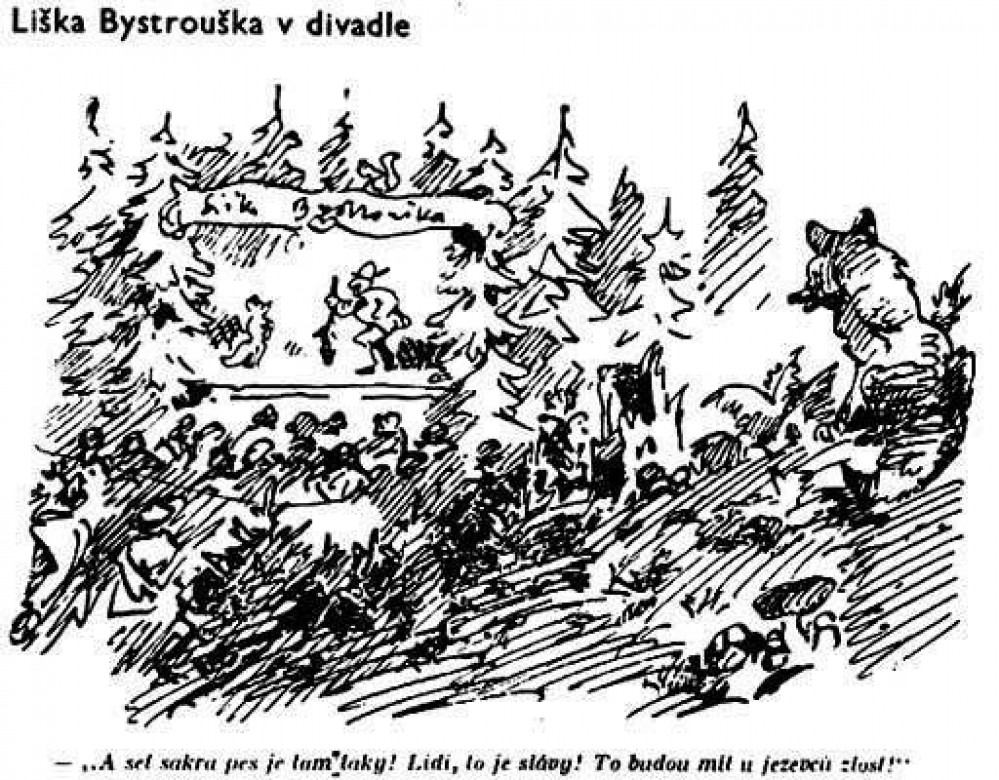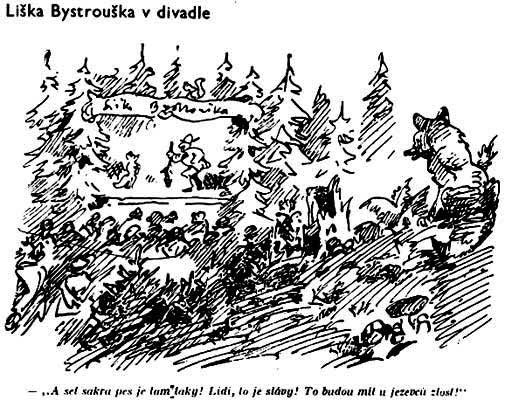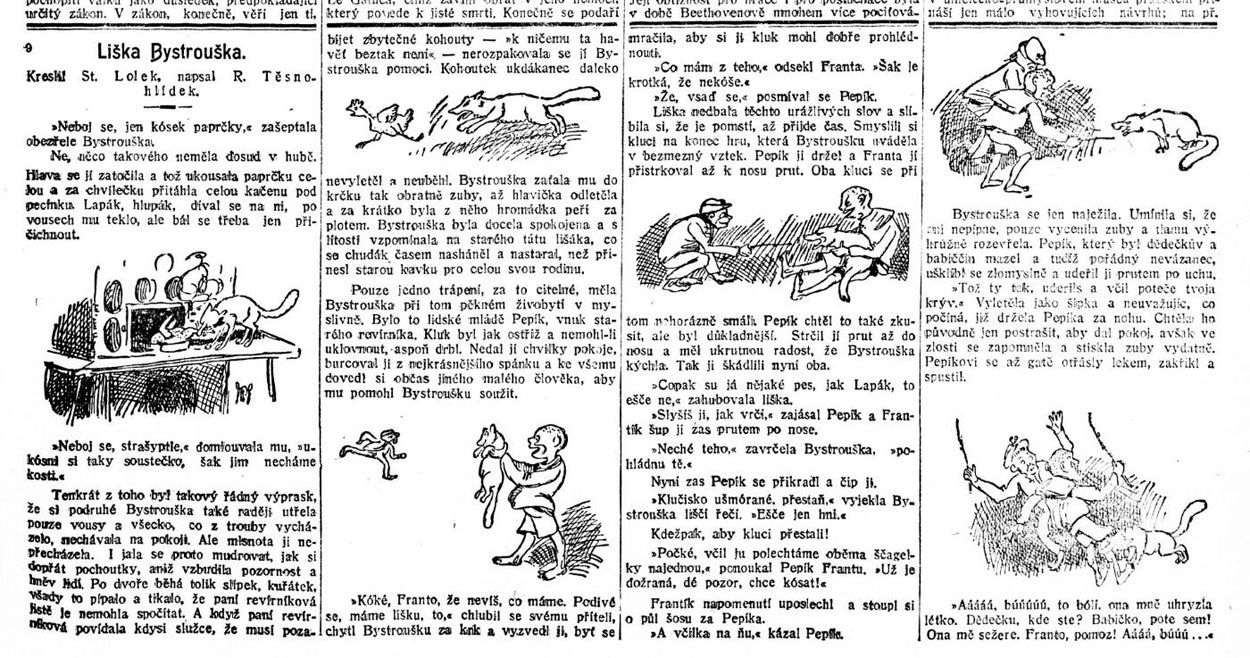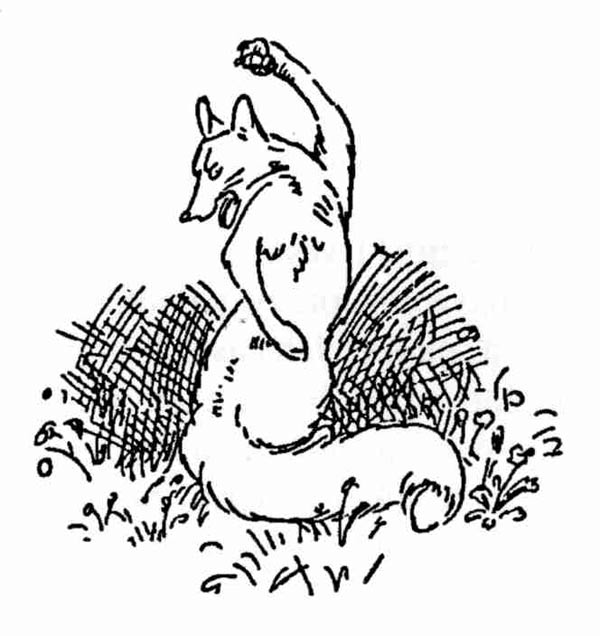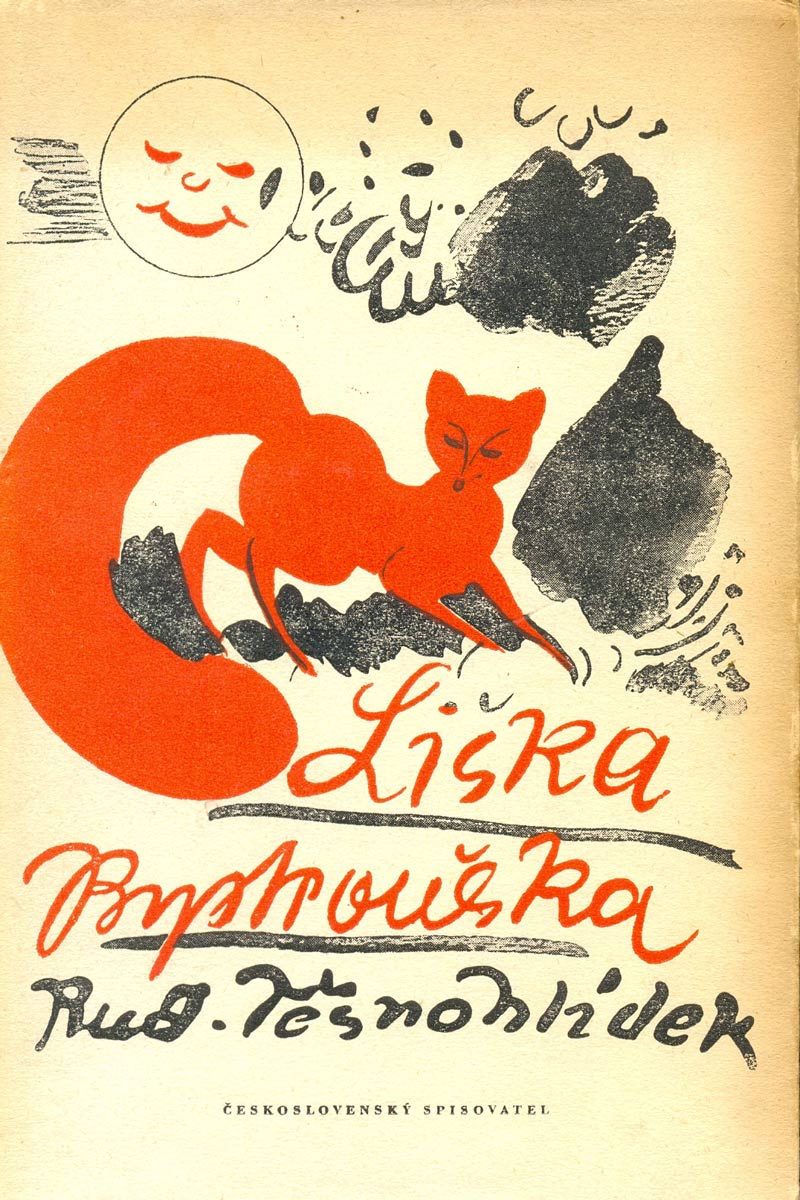'Vixen Sharp-Ears'.
Stanislav Lolek was a late 19th-century, early 20th-century Czech painter, graphic artist and illustrator. He is best-known for drawing the illustrated newspaper story 'Liška Bystrouška' ("Vixen Sharp-ears", 1920), famously adapted into an opera by composer Leoš Janáček as 'Příhody Lišky Bystroušky' ('The Cunning Little Vixen').
Early life and career
Stanislav Lolek was born in 1873 in Palonín, a village near the city of Mohelnice. His father was a teacher. Lolek studied forestry in Písék and between 1893 and 1895 worked as a forest ranger on a large estate near Lnáře. As he mapped the region, he added illustrations as well. At the advice of his friends, Lolek studied painting at the Academy of Fine Arts in Prague between 1895 and 1901 and later graphic arts in Munich. Between 1929 and 1935, he was head of the Slovácko Museum in Uherské Hradiště. Most of his drawings and paintings depict animals and nature landscapes in Bohemia. Nevertheless, Lolek enjoyed hunting. After visiting a 1907 exhibition in Paris about Impressionism, his paintings evolved more towards this style.
'Liška Bystrouška' (Lidové Noviny, 17 April 1920).
Vixen Sharp-ears
In 1920, Lolek's illustrations of foxes were sent to the Prague newspaper Lidové Noviny. Czech author Rudolf Těsnohlídek (1882-1928) was asked to write a story to go along with the images. The tale, titled 'Liška Bystrouška' ("Vixen Sharp-Ears") was serialized in the paper from 7 April until 23 June 1920. The story stars a female fox, or vixen, named Bystrouška. Originally, Těsnohlídek had named the character Bystronožka, but in the first printed episode this name was misspelled, leading to the character's permanent name Bystrouška. The plot kicks off with farmer Bartoš arriving home late, after a night of drinking. As an excuse, he has captured a baby vixen, Bystrouška, which he gives to his grandson Pepik. Bystrouška turns out to be too wild. After killing several of their chickens, she flees and has many other adventures, while growing into an adult.
'Vixen Sharp-Ears' holds the middle ground between a series of sequential illustrations and a text comic. Contrary to most other text comics, the narration and dialogue don't appear underneath the images. Instead, the comical, cartoony illustrations appear as visual interludes within the text. In each episode, the images are presented on one and the same page, giving them a sequential feel, comparable to a comic strip.
'Vixen Sharp-Ears' was a huge success and has been adapted for radio, audio plays and, very exceptionally, a complete opera. Czech composer Leoš Janáček gave it a slightly different title, 'Příhody Lišky Bystroušky' ('The Cunning Little Vixen'), premiering on 6 November 1924 in the National Theatre of Brno. When Janáček died in 1928, music from the last scenes of 'The Cunning Little Vixen' played at his funeral. Since then, 'The Cunning Little Vixen' has been restaged regularly, also across the Czech borders. In 1956, it was also adapted into a movie by Austrian theater and opera director Walter Felsenstein. In 2003, the story was also adapted into an animated short.
Other illustration work
Stanislav Lolek also livened up the pages of a 1909 Czech edition of Rudyard Kipling's 'Jungle Book'. The original 1894 English-language edition was illustrated by John Lockwood Kipling, William Henry Drake and Paul Frenzeny.
Death and legacy
In 1936, Stanislav Lolek died in the town Uherske Hradiste, at the age of 62. A statue of his vixen character can be seen in Hukvaldy, the birth place of opera composer Leoš Janáček.


